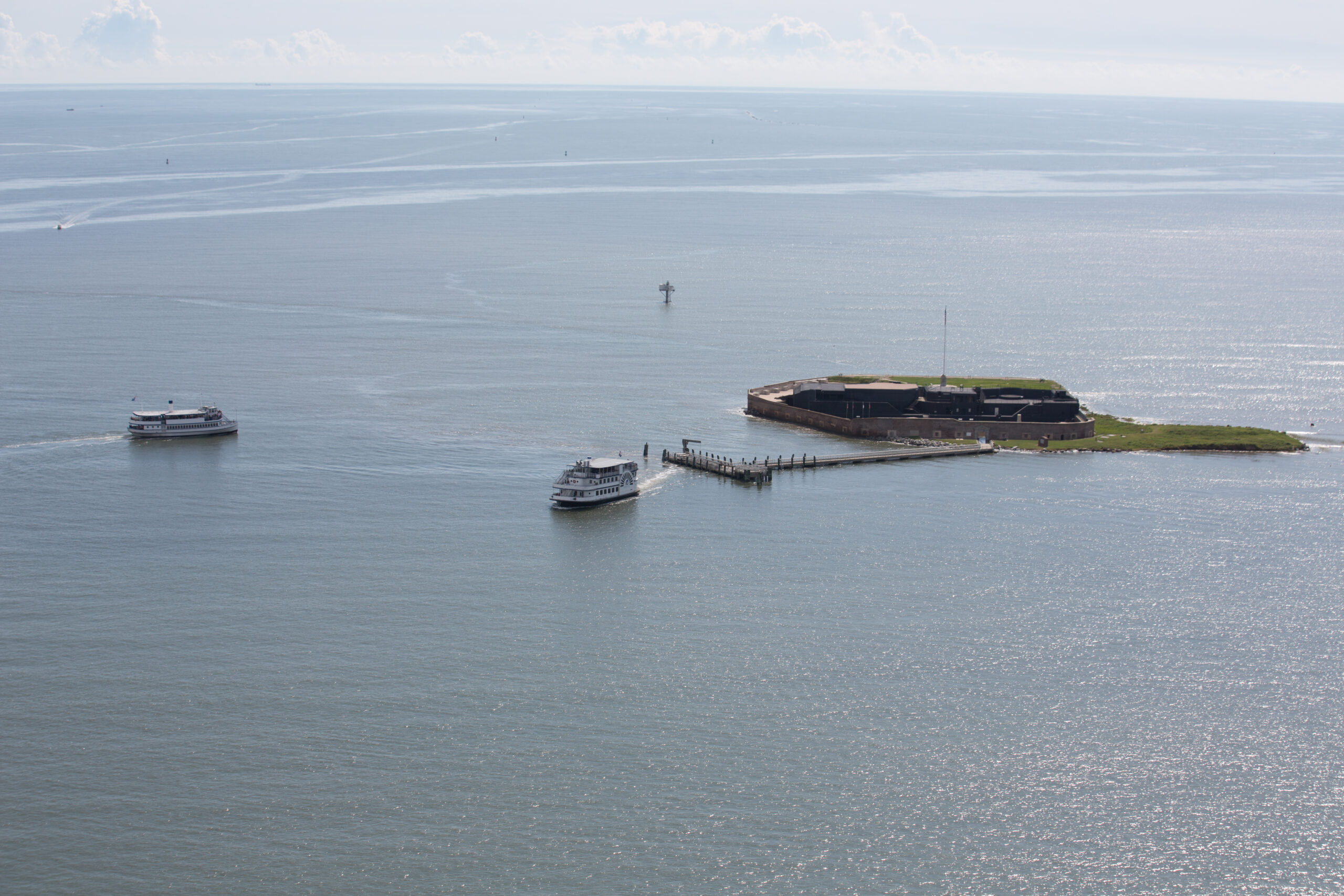The Sights Of Charleston
Fort Sumter Palmetto Carriage Works

Sitting in the middle of Charleston Harbor, Fort Sumter is most famous for being the site of the first battle in the American Civil War. Following the War of 1812, several weaknesses to the U.S. coast were identified and plans were made to fortify these areas. From Maine to Louisiana, there were over 40 fortifications built before construction was halted due to the outbreak of the American Civil War. Fort Sumter was one of these fortifications built as the area was identified as vulnerable to an attack. Construction began in 1829.
When Abraham Lincoln was elected president in 1860 by a largely northern vote, many of the southern states began talking about the idea of secession. Southern senators were vacating their seats and joining the confederate mission to secede from the Union. By December of 1860, South Carolina had officially seceded from the Union and by February of 1861, six more southern states followed suit, establishing the Confederate states of America, with Mississippi senator Jefferson Davis elected as its provisional president.
With the controversy surrounding the president-elect and the newly formed Confederacy at play, tensions were high in Charleston and at Fort Sumter. Since South Carolina was the birthplace of Union secession, it was not surprising that the crisis would ultimately come to a head on Fort Sumter.
The Battle of Fort Sumter occurred on April 12, 1861 and signaled the beginning of the American Civil War. For 36 hours, the two sides fired upon one another, with the Confederacy taking an early advantage as the Union forces were extremely outmanned and undersupplied. Once it was clear that the fort would not hold, Union major Robert Anderson surrendered Fort Sumter to Brig. Gen. P.G.T Beauregard’s Confederate forces.
This has come to be known as the bloodiest war in American history, claiming more than 620,000 lives over four years. Fort Sumter was surrendered by Union forces to the Confederate army, and it remained under their control for the next four years while the Civil War played out.
